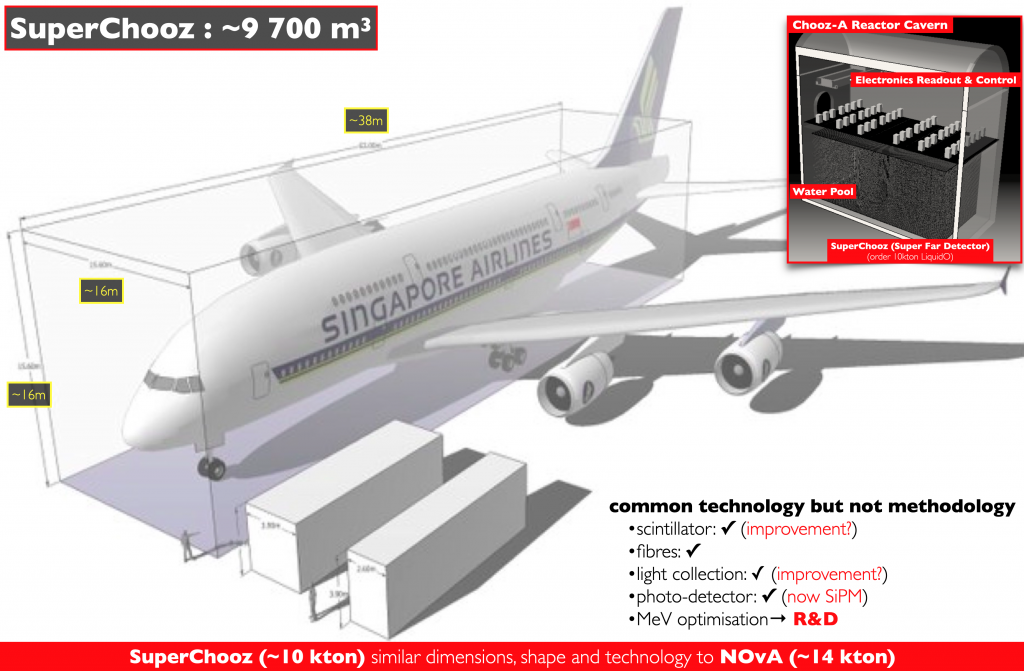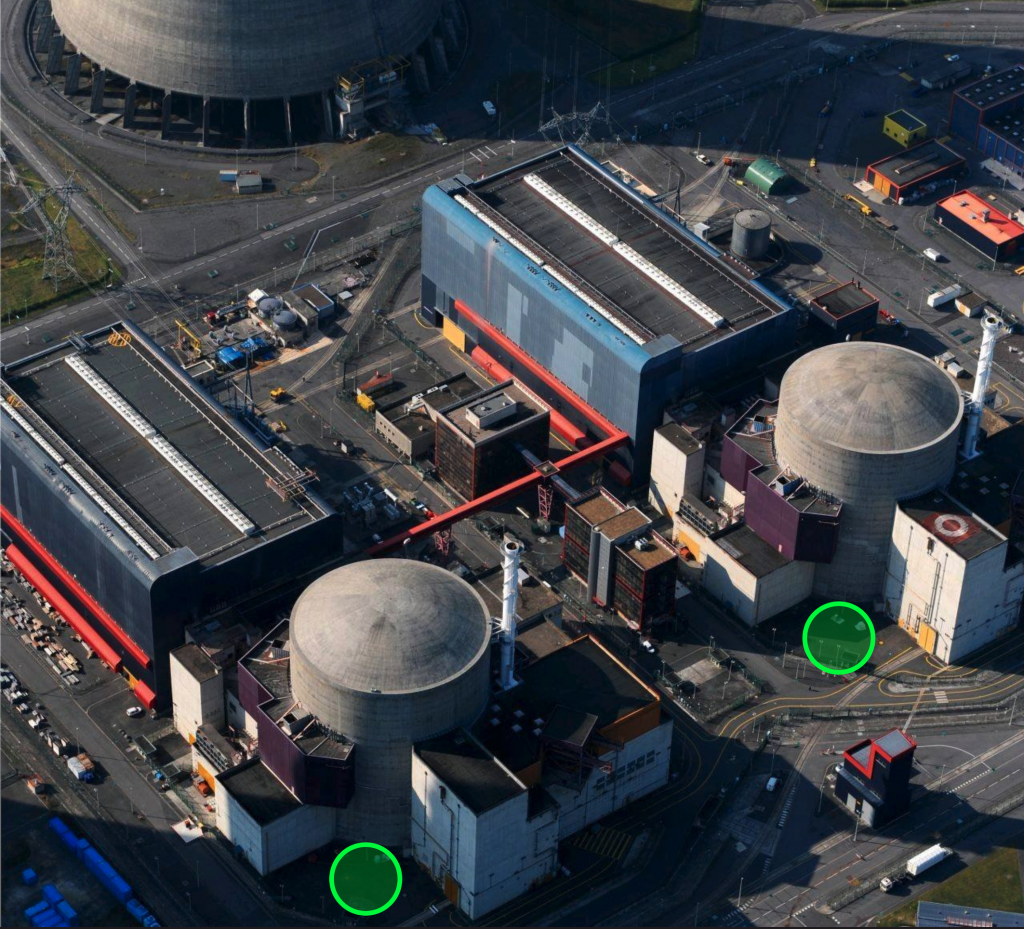Depending on the location sites, the current preliminary design of the SuperChooz project implies two (2) types of detectors:
- the ultra-near detector (UND): two ≤5ton size; one per reactor core
- the super-far detector (SFD): order 10kton in size
Their definitions are implicitly referring to the reactor neutrino exposure, used for SuperChooz main physics programme definition. Compensating for the baseline to the Chooz-B reactor cores, they are designed to yield an order of 10 million neutrino interactions per year, so they can reach the needed per-mile uncertainty precision control for physics. When it comes to other physics channels, such as solar, supernovae, and atmospheric neutrinos, the ultra-near detectors do play a negligible role.
The Chooz-A reactor cavern (30,000m3) appears preliminarily suitable for the SFD in terms of both total size and specific geometry, limited by the attenuation length of light along the fibres of LiquidO. The Chooz-A laboratory also enables room for a fully capable water-based active surrounding veto detector for the tagging and mitigation of a fraction of the backgrounds induced by both the cosmic muons and natural radioactivity (U/Th chains mainly). The latter is expected to be dominated by the surrounding laboratory walls.

Both UND and SFD rely on the same LiquidO technology for 3 main reasons:
- active particle-ID for major background reduction
- inter-detector comparability to reduce detection induced, such as energy, etc. systematics
- high precision vertex reconstruction for powerful 4D (time-space) coincidence detection
The latter is key for both reactor neutrino detected mainly via the inverse-beta-decay event coincidence and also for the indium-induced coincidence used for solar neutrino detection. Another important implication is the control of the target composition precision, which is also expected to be aided by the LiquidO technology.

The UND is going to be imminently experimentally demonstrated as a byproduct of the AntiMatter OTech project, which flourishes into the CLOUD experiment. This first experimental step will provide critical experimental demonstration and quantification of the LiquidO technology to support the SuperChooz experimental requirement for its feasibility. This information will be critical for both UND and SFD, while the outcome of the UND will be direct. The SFD demonstration will need to be further followed by some dedicated scaling prototyping, upon the success of the UND prototyping fully funded and covered in today’s experimental activities via CLOUD. This is all part of the SuperChooz Pathfinder feasibility programme.
